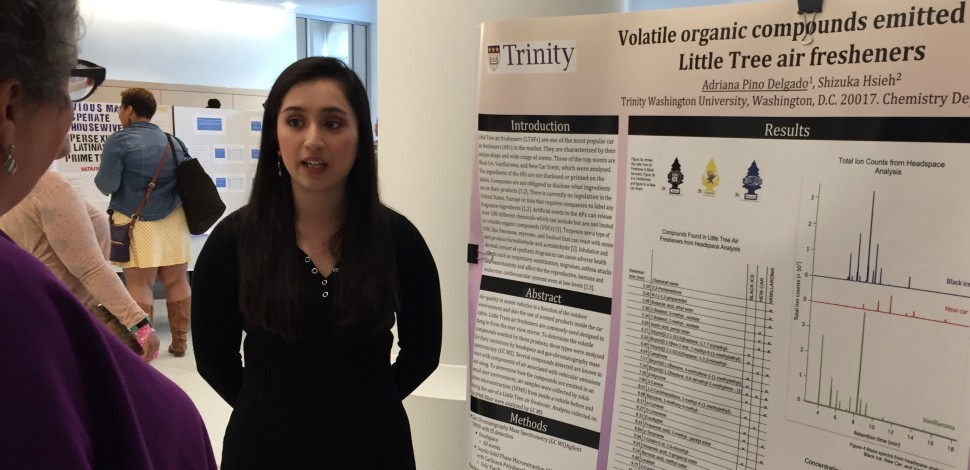
Biology Senior: Published Author
Trinity senior biology major Adriana Pino Delgado is a published author of an article in a peer-reviewed journal, Molecular Cell. She was part of a research team that co-authored the article, “Genomic Copy-Number Loss Is Rescued by Self-Limiting Production of DNA Circles,” which was posted online on October 4, 2018.
“We are so proud of Ms. Pino Delgado!” said Dr. Patrice Moss, Clare Boothe Luce Associate Professor of Biochemistry and chair of the biology program at Trinity Washington University. “Not only is she an amazing student in our courses, she excelled in her summer research experience at New York University, and, now, she has a published manuscript about her research. It’s extraordinary for an undergraduate student to have an article in a peer-reviewed journal before she graduates. I’m especially proud that she achieved this at Trinity – a liberal arts institution and a women’s college.”
Ms. Pino Delgado will travel with Dr. Moss and other Trinity STEM scholars this semester to the University of Maryland Baltimore County research conference and the Annual Biomedical Research Conference for Minority Students. She was one of two students who received a travel award to attend and present at another student centered conference, SACNAS – Society for Advancement of Chicanos/Hispanics and Native Americans in Science.
“Ms. Pino Delgado was a research scholar in summer 2017,” noted Dr. Moss. “That experience gave her a strong foundation and experience, which I believe made her more competitive for this eight student slot program at New York University this past summer.”
Trinity has a proud tradition of students excelling in science and math dating back to the first class that graduated in 1904. In 2017, Trinity received a $1 million grant from the Howard Hughes Medical Institute to launch the Trinity’s ExCEL program (Experience x Confidence Equals Leadership), which focuses on increasing the retention and success of students pursuing science majors, with a focus on women of color, women from low income areas and first generation students.
Research Summary
Genomic Copy-Number Loss Is Rescued by Self-Limiting Production of DNA Circles
Copy-number changes generate phenotypic variability in health and disease. Whether organisms protect against copy-number changes is largely unknown. Here, we show that Saccharomyces cerevisiae monitors the copy number of its ribosomal DNA (rDNA) and rapidly responds to copy-number loss with the clonal amplification of extrachromosomal rDNA circles (ERCs) from chromosomal repeats. ERC formation is replicative, separable from repeat loss, and reaches a dynamic steady state that responds to the addition of exogenous rDNA copies. ERC levels are also modulated by RNAPI activity and diet, suggesting that rDNA copy number is calibrated against the cellular demand for rRNA. Last, we show that ERCs reinsert into the genome in a dosage-dependent manner, indicating that they provide a reservoir for ultimately increasing rDNA array length. Our results reveal a DNA-based mechanism for rapidly restoring copy number in response to catastrophic gene loss that shares fundamental features with unscheduled copy-number amplifications in cancer cells.
